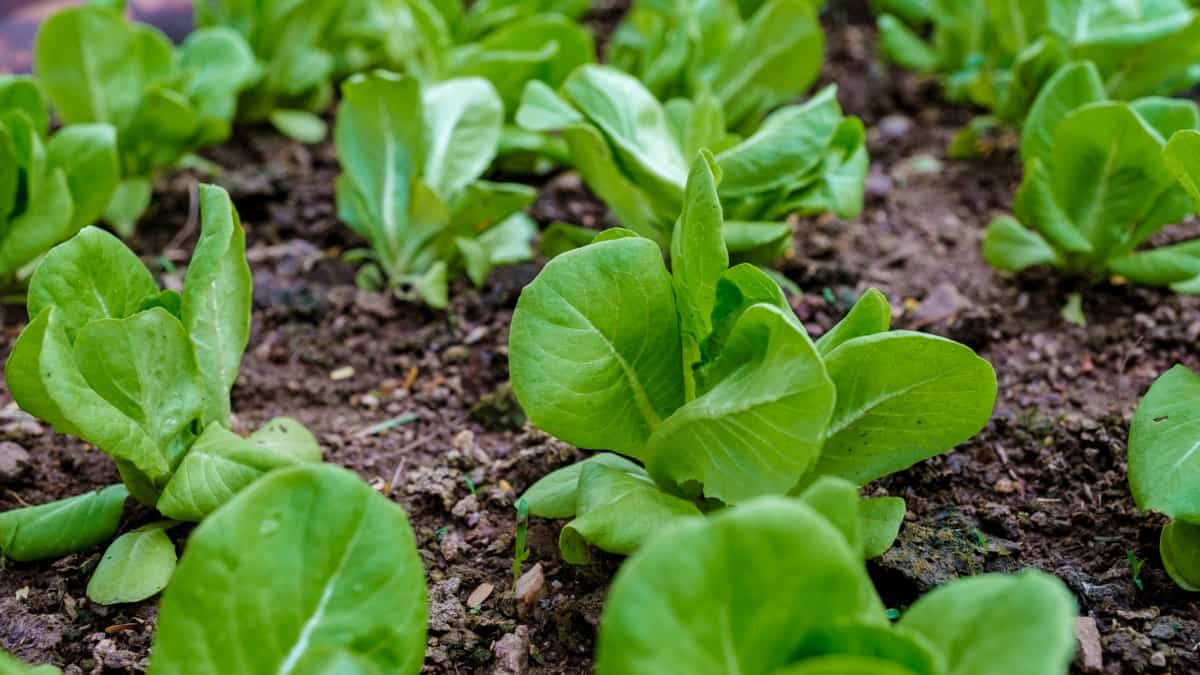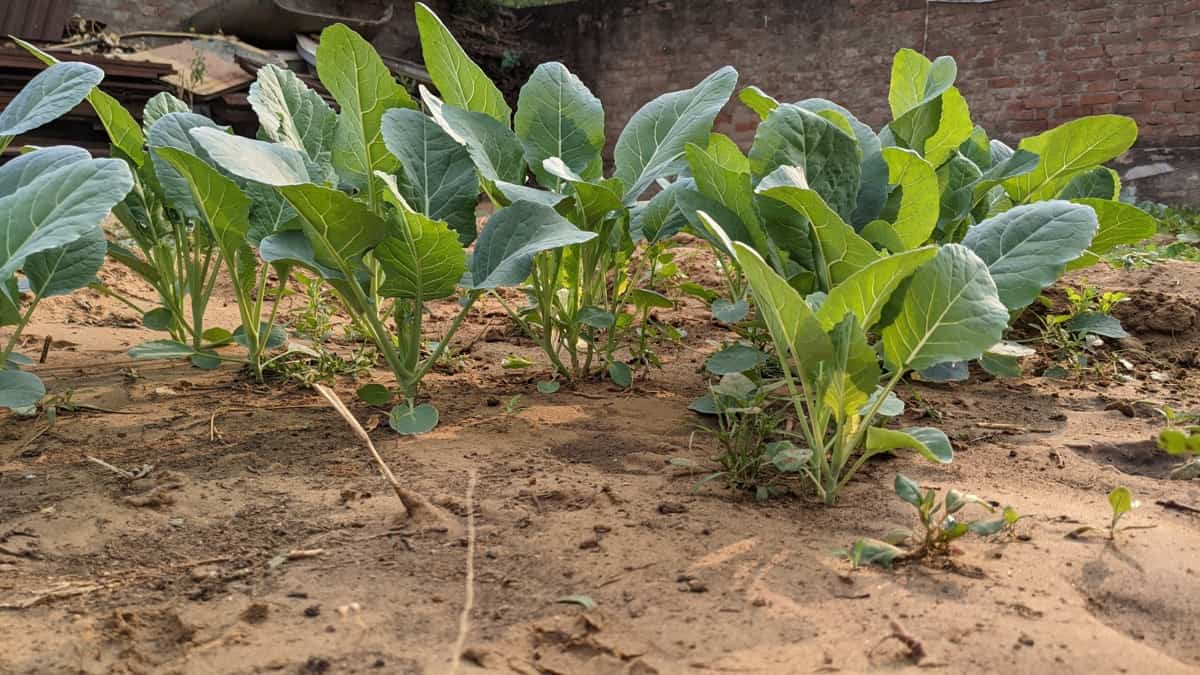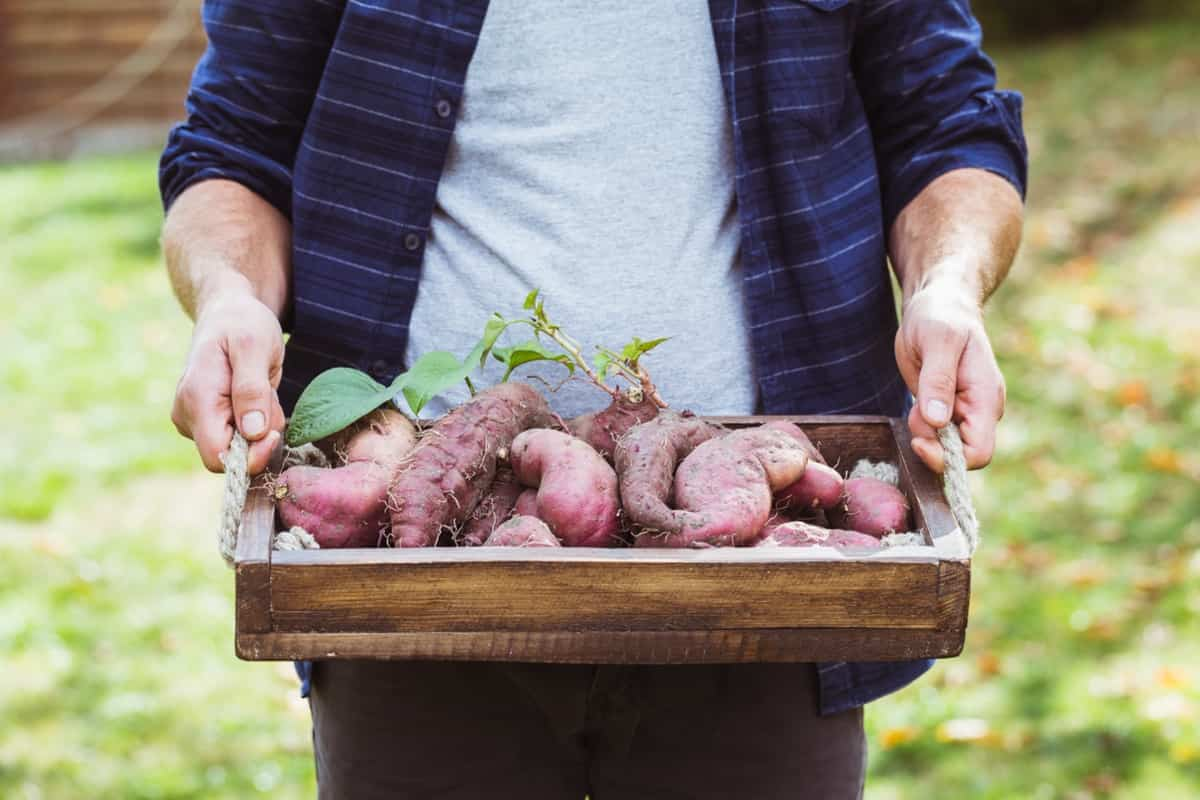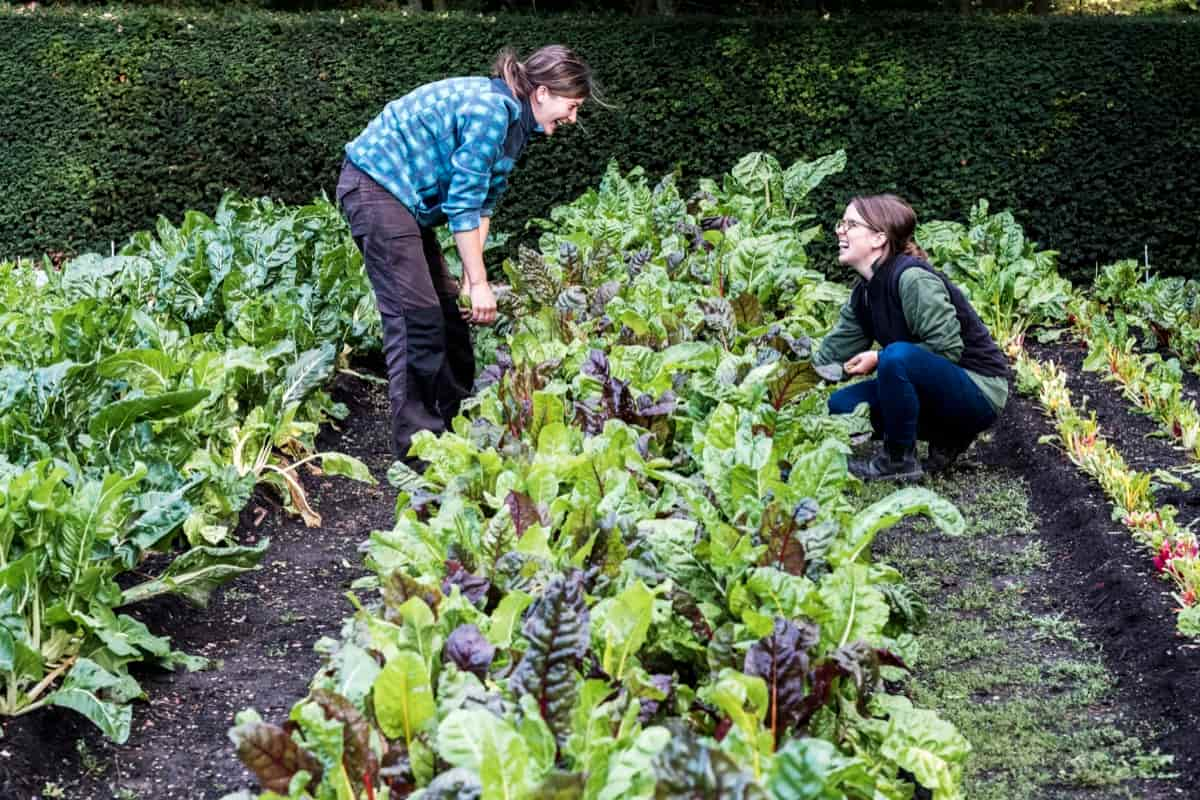Heat-tolerant greens are a great addition to any summer garden. Not only do they provide delicious, nutritious greens all season long, but they also require less water and allow you to plant in hot weather without worrying about your plants getting burned. With the right types of plants, you can still have a lush garden full of beautiful greens that can withstand even the hottest summer days.
When picking the right heat-tolerant green for your garden, it’s important to consider your climate and growing conditions. Once you’ve selected the right heat-tolerant green for your garden, it’s time to start planting. Most heat-tolerant greens can be planted directly in the ground after the last frost date for your area.
To give your plants a head starts, you can also start them indoors 6-8 weeks before the last frost date. When transplanting outdoors, make sure to harden off your plants slowly by gradually exposing them to outdoor conditions over 7-10 days. This will help prevent transplant shock and ensure that your plants are ready to take on the summer heat.
12 Heat-tolerant Greens to Try this Summer:
Bok Choy
Bok Choy is a heat-tolerant leafy vegetable that thrives in summer weather. Bok choy is rich in vitamins A and C and is a good fiber source. Bok choy is perfect for summer gardening. This vegetable is heat tolerant and thrives in hot weather, making it a great addition to your summer garden. Bok Choy is a versatile vegetable used in many different dishes.
In case you missed it: How to Grow Bok Choy from Seed to Harvest: Check How this Guide Helps Beginners

Ethiopian Mustard
- Ethiopian Mustard is a great option if you’re looking for a heat-tolerant green to add to your summer garden crops. This hearty green can withstand temperatures up to 40°C, making it ideal for growing in hot climates. Ethiopian Mustard is also relatively drought-resistant, so it’s a good choice for gardens that don’t receive a lot of water.
- Suppose you’re growing Egyptian Mustard in your garden, water it regularly. It’s best to water in the morning, so the leaves have time to dry off before nightfall. Egyptian Mustard is also susceptible to pests, so keep an eye out for aphids and other insects.
Dinosaur Kale
Kale is a nutrient-dense superfood packed with vitamins, minerals, and antioxidants. It can be grown year-round in many climates. Kale is a heat-tolerant green that can be planted in early spring or late summer. It is a cool season crop that does best in full sun but can bear some shade. Kale grows well in most soil types as long as it is well-drained. Amend clay soils with organic matter to improve drainage.
In case you missed it: 18 Common Kale Plant Problems: How to Fix Them, Solutions, and Treatment

Kale is a heavy feeder and benefits from being fertilized every 4-6 weeks with compost or an all-purpose fertilizer. Dinosaur Kale is a variety of Kale that is especially well-suited for summer gardens. This dark green leafy vegetable has a slightly sweeter flavor than other varieties of Kale and is more heat tolerant than other types of Kale, making it ideal for growing in warm weather climates. Dinosaur Kale can be eaten raw or cooked, and its nutrient-rich leaves make it a healthy addition to any diet.
Egyptian Spinach
Egyptian Spinach is a heat-tolerant green you’ret for your summer garden crops. This leafy vegetableIt’spacked with nutrients that make it a great addition to any dish. Try Egyptian Spinach if you’re looking for a summer green that can take the heat. It’s often used in salads or as a cooked green and can even be eaten raw. Egyptian Spinach is heat tolerant and will thrive in your garden even when the temperatures start to rise.
Collards
Collards are versatile green that can be used in many dishes. When it comes to leafy greens, Collard greens are often overlooked. But these hearty plants are heat tolerant, making them a great option for summer gardening. Start seeds indoors before the last frost date in your area. Plant Collard greens in an area that receives full sun. They will also tolerate partial shade but may not produce as much foliage.
In case you missed it: 11 Self-watering Container Gardening Ideas: DIY Steps with 5 Gallon Buckets

Before planting, add compost or other organic matter to help improve drainage and nutrients. Water regularly, especially during hot, dry weather. Collard greens prefer consistent moisture and will wilt quickly if the soil is too dry. This leafy green is extremely heat tolerant, making it a great option for summer cooking. Whatever way you choose to eat them, Collards are a delicious way to enjoy the summer season.
Chaya
The leafy vegetable is grown for its stems, which are cooked and used like Spinach. Chaya can reach up to 6 feet in height and produces small, yellow flowers. It prefers full sun and well-drained soil. It is related to the common Spinach plant; its leaves can be eaten cooked or raw. When cooked, Chaya has a similar taste and texture to Spinach.
Chaya is an excellent source of vitamins A and C, iron, and calcium. It also contains higher levels of protein than most other greens. To grow Chaya, start with a cutting from an existing plant. Plant the cutting in well-draining soil in an area that gets full sun. Water regularly, and fertilize every few weeks with a balanced fertilizer. Chaya can be harvested after 4-6 months.
Chaya is a fast-growing crop that is relatively easy to care for. You should keep the plants well-watered, especially during hot weather. Chaya can be susceptible to pests and diseases, so regular monitoring and pest control measures are necessary. Harvest Chaya leaves when they are young and tender for the best flavor.
Sweet Potato
You should consider a few key things when selecting Sweet Potatoes for your summer garden. First, choose a heat-tolerant variety. Second, ensure the Sweet Potatoes you select are well-suited to the length of your growing season. Finally, give your Sweet Potatoes plenty of space to grow. Regarding heat tolerance, a few varietiyou’llSweet Potatoes do well in warm climates.
In case youyou’red it: Growing Peppers from Seed to Harvest: For Bell Peppers, Chilli Peppers, Spicy/Hot Peppers, Sweet Peppers, and Jalapeno Peppers

Regarding the length of your growing season, selecting SThey’retatoes with enough time to mature before the first frost hits is important. In most cases, you’ll need at least 100 days from planting to harvest. If you’re untree’sbout the length of your growing season, choosing a variety that matures in 80 to 90 days or less is always best. Finally, remember that Sweet Potatoes need plenty of room to grow. They’re typically planted in hills or mounds, with 4-6 plants per hill. Each plant should be given about 2 feet of space to ensure proper growth.
Moringa
The Moringa tree’s leaves, seeds, and pods are all edible aIt’save many health benefits.
Moringa leaves are a good sourcedoesn’tamins A, C, and E. They also contain calciumyou’ressium, and iron. The leaves can be added to salads, soups, stews, curries, and other disheIt’soringa is a heat-tolerant green that is perfect for summer gardens. Moringa is drought-resistant and can tolerate temperatures up to 37°C. It’s a relatively low-maintenance plant; once established, it doesn’t require much water or fertilizer.
Katuk
If you’re looking for a heat-tolerant green to add to your summer garden, Katuk is a great option. It’s a climbing vine and produces small, white flowers and long, slender fruits. Katuk is relatively easy to grow and can be started from seed or cuttings. It requires full sun and well-drained soil, and you should water regularly during the growing season. Once established, it is drought tolerant.
Harvest the leaves when they are young and tender for the best flavor. The fruits are also edible and can be eaten raw or cooked. Katuk is tolerant of both hot and humid weather, making it a good choice for summer gardening in many parts of the world. The vines can be harvested about two months after planting, and the fruits can be eaten raw or cooked.
Swiss Chard
Swiss Chard is a versatile, heat-tolerant green that can be used in various dishes. Its hearty texture and slightly bitter flavor make it a perfect addition to salads, sautés, and soups. Swiss Chard is also packed with nutrients, including vitamins and minerals like iron and magnesium.
In case you missed it: How to Grow and Care for Swiss Chard in Containers: Planting to Harvesting Process

Swiss Chard is a heat-tolerant green that is perfect for summer gardens. Swiss Chard can be enjoyed cooked or raw, making it a versatile addition to any meal. Swiss Chard is heat tolerant and can be planted in the spring or summer. Swiss Chard is a versatile vegetable used in many different dishes.
Amaranth
Amaranth is one of the best heat-tolerant greens for your summer garden crops. It can withstand temperatures up to 40°C and is a good source of vitamins A, and C. Amaranth is also a good choice for gardeners who want to add color to their gardens, as it comes in many different colors, including red, green, and purple.
Amaranth is a heat-tolerant green that is perfect for summer gardens. This leafy green is rday’sd to quinoa and produces small, edible seeds. Amaranth can be cooked like Spinach, or the leaves can be used fresh in salads. The plant grows quickly and can produce a large harvest in a short amount of time. Amaranth is a heat-tolerant grain that can be used in various dishes.
Arugula
Arugula is a heat-tolerant green that can be grown throughout the summer. This leafy vegetable is Arugula’sested in the morning, before the day’s heat sets in. When growing Arugula, it is important to keep the leaves well-watered. Arugula is a fast-growing crop ready to harvest in just a few weeks.
In case you missed it: Best Tips for Making Pepper Plants Hotter: Great Ideas for Beginners

Arugula is a heat-tolerant green that can be sown in late spring and grown throughout the summer. This fastIt’swing annual will provide an abundance of fresh greens in salads, sandwiches, and pasta dishes. Arugula’s slightly peppery flavor grows more intense as the leaves mature. Sow Arugula seeds directly in the garden or start them indoors for 4-6 weeks before transplanting them outside.
Conclusion
Warmer weather means more time outdoors, which leads to more gardening opportunities. But with summer temperatures on the rise, it can be not easy to find greens and vegetables that are tolerant of heat. It’s important to know what types of plants will thrive in the warmer months to ensure your garden is full of delicious produce all summer.
Heat-tolerant greens are a great way to try something new and nutritious in summertime recipes. With their bold flavors, these vegetables can help bring the zing back into your cooking routine. Whether you use them as part of salads or cooked dishes, they will surely add a sparkle of flavor and color, making your meals a bit more special.
- Flower Garden Designs and Layouts for Beginners
- Planting and Spacing Techniques in Papaya: A Beginner’s Guide
- Growing Gold: Essential Techniques for Planting Pineapples
- How to Make Kalanchoe Plant Bushy: Home Remedies and Solutions
- 11 Reasons Why Your Gardenia is Not Blooming: Home Remedies and Solutions
- Eco Elegance: The Guide to Designing a Drought-Tolerant Landscape
- Gardening on a Slope: Strategies for Hillside Landscaping
- Nourish and Flourish: Top Organic Mulches for Thriving House Plants
- Everything You Want to Know about Indian Mogra Flower: Discover Uses and Growing
- Green Thumb Success: Expert Tips for Cultivating Greenhouse Pumpkins All Year Round
- Maximize Growth & Flavor: The Ultimate Guide to Companion Planting in Herb Gardens
- How to Control Rhododendron Problems Naturally: Home Remedies and Organic Ways to Fix Them
- Natural Magic: The Remarkable Benefits of Cinnamon for Plants
- Best Steps to Revive Dying Tulip with Natural and Organic Treatment
- 10 Reasons Why Your Angel Trumpet is Not Blooming: Remedies and Treatment
- How to Fix Periwinkle Leaf and Flower-Related Problems: Natural Remedies and Solutions
- How to Fix Zinnias Leaf and Flower Problems: Discover Natural and Home Remedies
- Organic Steps to Induce Lemon Tree Flowers: A Comprehensive Guide
- Bloom Booster: Crafting the Perfect Homemade Bougainvillea Fertilizer
- Optimizing Growth: A Guide to Applying NPK Fertilizer for Potted Plants
- 10 Best Homemade Fertilizers for Rubber Plant: DIY Recipes and Application Method
- How to Boost Female Pumpkin Flowers: Effective Steps for More Flowers and High Yields
- Transform Your Indoor Garden: Top Benefits of Pink Salt for Houseplants
- 10 Best Homemade Fertilizers for Peacock Plants (Calathea): Easy DIY Guide
- Unlock Blooms: 9 Reasons Why Your Potted Chrysanthemum is Not Blooming
- 8 Reasons Why Your Potted Hibiscus is Not Blooming: Fix it with Simple Solutions
- Unlock Blooms: 9 Key Reasons Your Potted Frangipani Won’t Flower
- 10 Reasons Why Is My Ice Plant Not Blooming: Remedies and Treatment
- 10 Reasons Why My Potted Hydrangea Not Blooming: Treatment and Remedies
- 10 Reasons Why is My Wisteria Not Blooming: Remedies and Treatment
- 10 Reasons Why is My Goldfish Plant Not Blooming: Remedies and Treatment
- Maximize Your Space: Ultimate Guide to Balcony Gardening with Grow Bags
- 10 Reasons Why Your Iris is Not Blooming: Remedies and Treatment
- 10 Reasons Why Your Anthurium Plant is Not Blooming: Treatment and Remedies
- 10 Reasons Why Your Aquaponic Plants Are Not Flowering: Remedies and Treatment
- 10 Reasons Why Your Agapanthus is Not Flowering: Remedies and Treatment